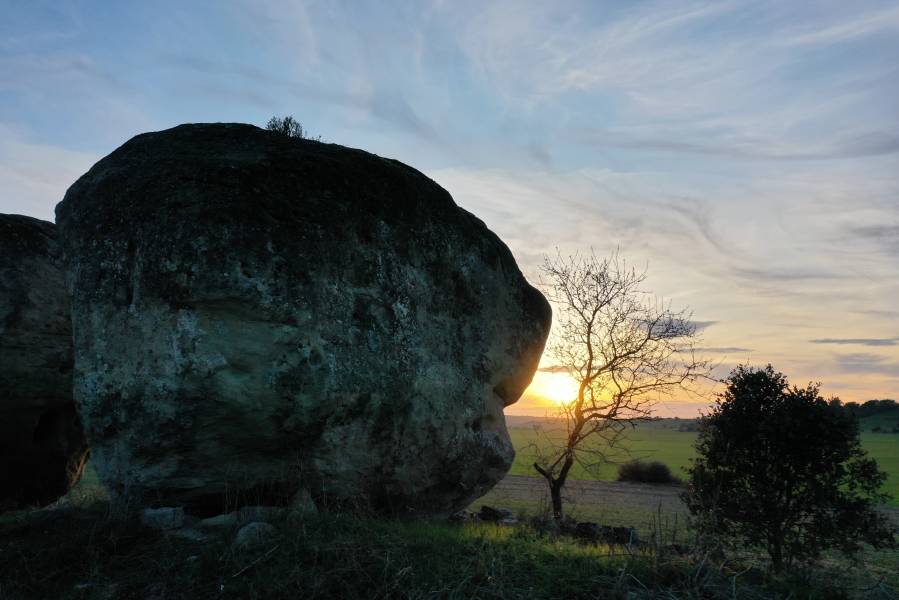Things you are interested in knowing if you come to spend a few days in a holiday cottage in Guissona
The origin of the city is very old, as vestiges of ancient settlers from the end of the Bronze Age and the beginning of the Iron Age have been found, around 800 BC . To the. II BC, the Roman city of Lesso is established there, one of the most important in Western Catalonia, established in 100 BC, and which had a long development of up to seven centuries until, it is assumed, it was conquered by the Saracens in the 8th century. From this time on, there is a poorly documented period until the 11th century, when historical records of the medieval walled town reappear.
It is known that the
reconquest of Guissona was very difficult and that it took several attempts, from 975 to 1072, for the Christians to finally win the territory in the hands of bishop Ermengol d'
Urgell.
What you will discover in Guissona during your stay in a holiday cottage
The
Archaeological Park of the Roman City of Lesso de Guissona occupies an area of two hectares at the northern end of the Roman city of Lesso. A visit to the park allows you to discover a city in the process of being excavated, where some sectors have already been discovered such as a section of wall, the remains of a neighborhood of houses from the first moment of the city, the remains of a stately home of high imperial period, the remains of public baths (which were expanded to occupy an area of 2000 square meters) and the remains of a Visigoth cellar.
It is practically obligatory to take a tour of the historic centre, with its network of exclusively pedestrian streets and discover the Portal de l'Àngel, one of the three portals that contained the town wall, and the
Jewish quarter or Sant Magí quarter. You will see that the
Plaça Major is square and houses
the parish church of Santa Maria, a neoclassical temple and the largest in the diocese of Urgell.
Another emblematic building is the
old hospital , which was tyraslladat outside the walls, near the main entrance of the town, at the end of the s. XVIII This building had different uses over time and currently serves as a music school and municipal library. Also, in the
Municipal Museum , you will find the findings from the excavations of the territory.
Finally, the
Obra de Fluvià, Palau de Fluvià or Obra de Santa Llúcia is a Gothic-Renaissance palace that was left unfinished at the beginning of the 16th century and has been declared a Cultural Asset of National Interest. This palace is located one kilometer from Guissona, next to the road that leads to
Massoteres, in the old town of Fluvià. This construction was undertaken by
Bishop Pere de Cardona as a palace residence for the bishops to replace the old castle. Although the work progressed quickly, it was interrupted when Bishop Cardona moved to
Tarragona as the new metropolitan archbishop. In 1808 with the French War, the French fortified the building and destroyed part of the roof.
Things to do from your holiday cottage in Guissona
The surroundings of Guissona are an unbeatable area for walking and practicing outdoor sports. A route that we propose is the
Ruta de Guissona in the Llobregós River Valley . On this route, you will discover the beautiful valley of the Llobregós river, located 9 km north of the town. It is a completely different landscape from those that characterize La
Segarra, as it is wooded and humid. During the route, you will pass the old
Molí del Cava , which preserves the waterfall and the
oak grove of the Torres del Riu, crossing the Llobregós river twice.
If you visit Guissona in July, don't miss the
Lesso Roman Market , a festival that reproduces scenes from the Roman era where you can enjoy gladiator fights, dances, slave sales and stalls with merchants of the time.
Guissona has a very important
meat industry , with facilities of more than one hundred thousand square meters, which can be visited on an
electric train to learn about the production process followed by whips, hams and sausages.
Golf lovers have, three kilometers from the town, the
bonÀarea Golf - Pitch&Putt, located in the village of Massoteres.
And don't forget to...
And don't forget to try the morenetes, the angel feathers (plomes d'àngel) and the traditional coca de recapte and the one made of bread with sugar. Ah! and please, taste the ratafia de Guissona , a liqueur made with tender walnuts.
